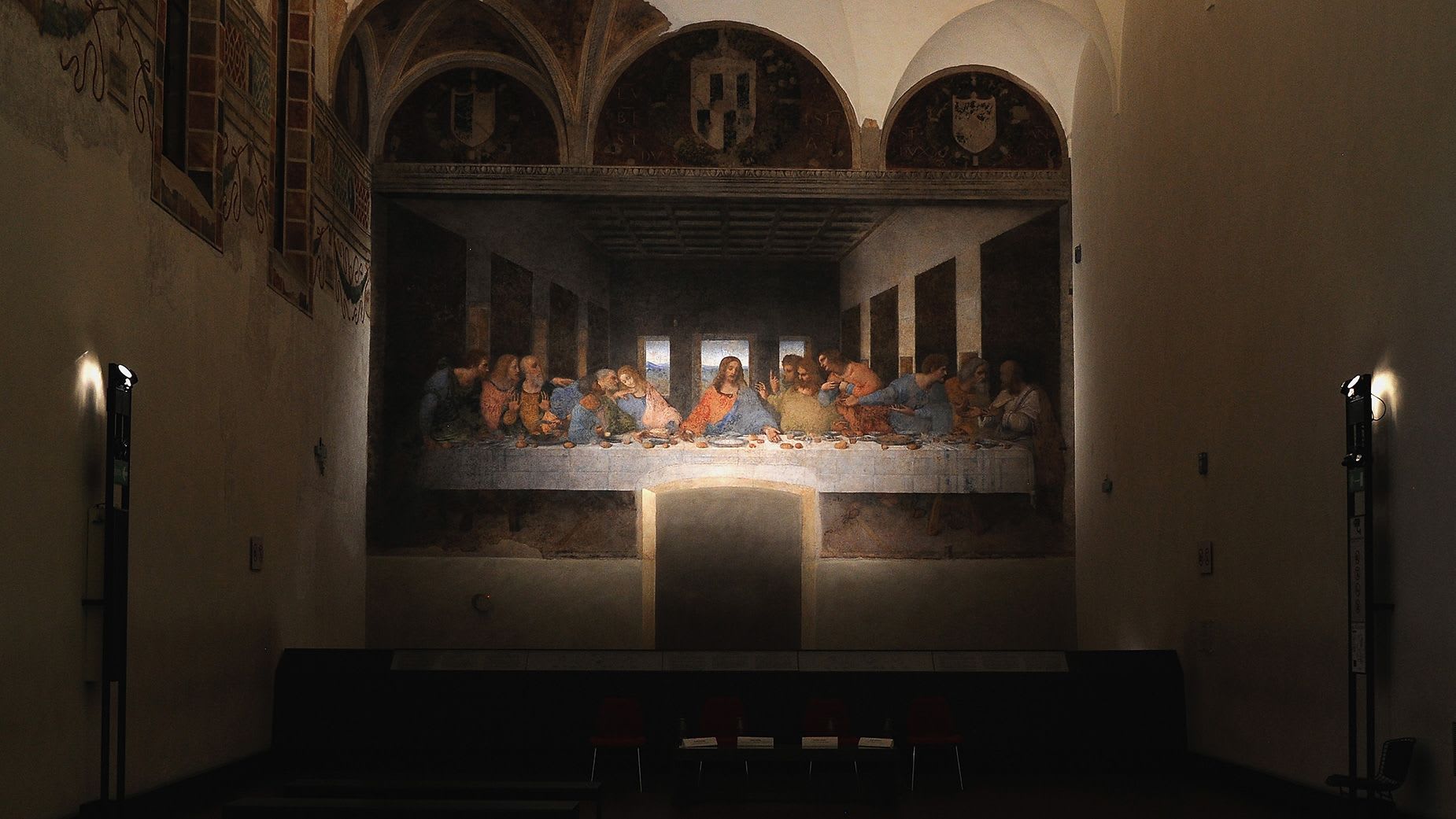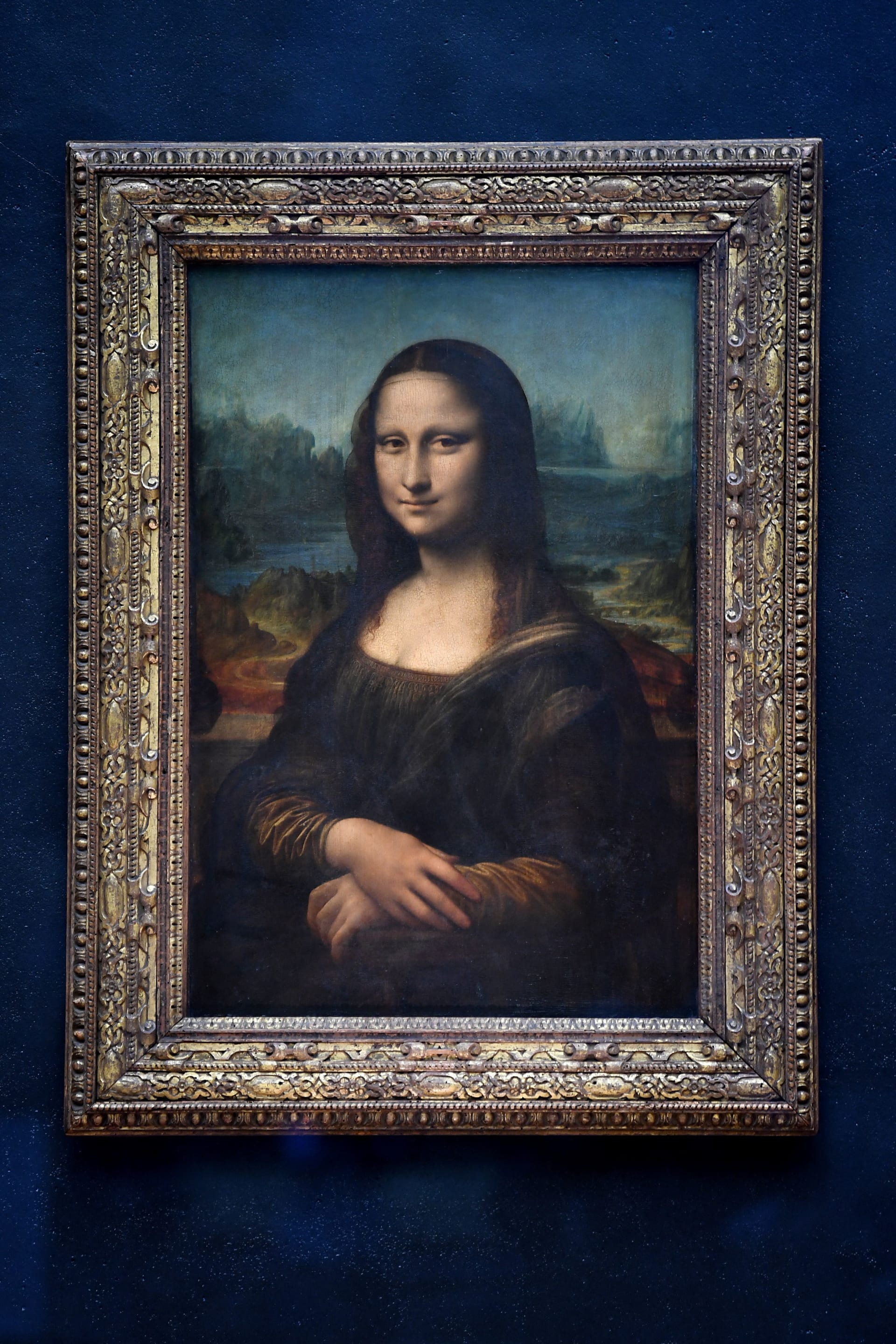دبي ،الإمارات العربية المتحدة (CNN) -- كان ليوناردو دافنشي رسامًا، وكاتبًا، وعالم تشريح، ومتخصصًا بالعديد من المعارف الأخرى، ويتمتعً بمواهب كثيرة منحته جميعها لقب العالِم الموسوعي.. وبات ممكنًا إضافة لقب كيميائي مبتكر إليها، راهنًا.
وأشارت دراسة جديدة نُشرت في مجلة الجمعية الكيميائية الأمريكية أخيرًا، إلى أنه اتّضح أن الفنان كان أكثر تجريبية مع "الموناليزا" الشهيرة ممّا اعتُقد سابقًا، ويرجّح أنه ابتكر تقنية شوهدت في الأعمال التي أُنجزت بعد قرن من الزمن.
واكتشف فريق من العلماء في فرنسا وبريطانيا، بواسطة استخدامهم حيود الأشعة السينية والتحليل الطيفي للأشعة تحت الحمراء، مركّبًا معدنيًا نادرًا داخل اللوحة الشهيرة. يعطي الاكتشاف نظرة جديدة حول كيفية رسم هذه اللوحة التي تعود إلى مطلع القرن السادس عشر.
وبالإضافة إلى صبغة الرصاص البيضاء والزيت، عُثر على المركب المعروف باسم بلومبوناكريت في الطبقة الأساسية للطلاء. وكانت دراسة نُشرت في عام 2019، قد حدّدت استخدام المعدن في العديد من أعمال رامبرانت في القرن السابع عشر، لكن لم يُصادف الباحثون ذلك في أعمال تعود إلى عصر النهضة الإيطالية حتى ظهر هذا البحث الجديد.

ويتشكّل البلمبوناكريت عند اتحاد الرصاص المؤكسد مع الزيت. وبحسب الدراسة، فإنّ خلط المادتين على لوحة الألوان، كان أسلوبًا اعتمده فنانون لاحقون مثل رامبرانت للمساعدة على تجفيف الطلاء. وقال جيل واليز، مؤلف الدراسة الأخيرة والأستاذ في جامعة السوربون في العاصمة الفرنسية باريس، الذي شارك أيضًا بتقرير في عام 2019، إن اكتشاف المركب النادر في "الموناليزا" يشير إلى أن ليوناردو قد يكون المؤسس الرئيسي لهذا المنهاج.
وأضاف واليز أنّ "كل ما يأتي من ليوناردو مثير للاهتمام للغاية، لأنه كان فنانًا بالطبع، لكنه كان أيضًا كيميائيًا وفيزيائيًا، وكان لديه الكثير من الأفكار، وكان مجرّبًا.. يحاول تحسين المعرفة في عصره".
وتابع: "في كل مرة تكتشف فيها أمرًا متصلًا بآليات عمله، تكتشف أنه كان متقدماً على عصره بشكل واضح".
وأوضح واليز أن زيت بذر الكتان كان لإنتاج طبقة الطلاء السميكة اللازمة للطبقة الأولى، فيما، ومن دون علمه كوّن المركب النادر.
تحليل "الموناليزا"
وأوضح واليز أنّه في عصرنا هذا، لا يُسمح للباحثين بأخذ عينات من هذه التحفة الفنية الموجودة في متحف اللوفر بباريس، والمحمية خلف الزجاج. وباستخدام عينة مجهرية تعود إلى عام 2007، أخذت من جزء بالعمل الفني خلف الإطار مباشرة، تمكنّ العلماء من تحليل الطلاء باستخدام آلة عالية التقنية تسمى السنكروترون. وسمح مسرّع الجسيمات للفريق بدراسة تركيبة البقعة على المستوى الجزيئي.
وقال واليز: "هذه العينات لها قيمة ثقافية عالية للغاية. فلا يمكنك أخذ عينات كبيرة من اللوحة، لذا فإن السنكروترون هو أفضل طريقة لتحليلها".
وتبيّن أيضًا أنّ الطبقة الأساسية للوحة "العشاء الأخير" الجدارية لدافنشي تحتوي على التركيب الكيميائي ذاته الموجود في لوحة "الموناليزا"، رغم أن اللوحة الجدارية مرسومة على الحائط، بحسب الدراسة. وأشار واليز إلى أنّ العلماء كان لديهم نطاق أوسع بكثير مع العينات المأخوذة من لوحة "العشاء الأخير" من أجل مراجعتها، ويبلغ عددها 17 في المجمل، التي أخذت من الطلاء المتقشر على الحائط مع مرور الوقت.
وتشكل لوحتا "الموناليزا" و"العشاء الأخير" اثنتين من أقل من 20 لوحة معروفة رسمها دافنشي في حياته. ويأمل الباحثون بأن يتمكنوا من اكتشاف المزيد عن الفنان وأعماله مع مرور الوقت.
وقال ويليام والاس، الأستاذ المتميز ورئيس قسم تاريخ الفن والهندسة المعمارية في جامعة واشنطن بمدينة سانت لويس الأمريكية: "لقد عرفنا منذ فترة طويلة أن ليوناردو كان مجرّبًا متأصلًا".
ولفت والاس، الخبير في فن عصر النهضة والهندسة المعمارية، غير المشارك في الدراسة: "لذلك، ليس مستغربًا أن نراه يجرّب أدوات أخرى، لا سيّما في ضوء بحثه المتفاني عن أفضل تقنيات الرسم (غير التقليدية في كثير من الأحيان) لإنشاء أعماله الفنية ’الحيّة‘".
